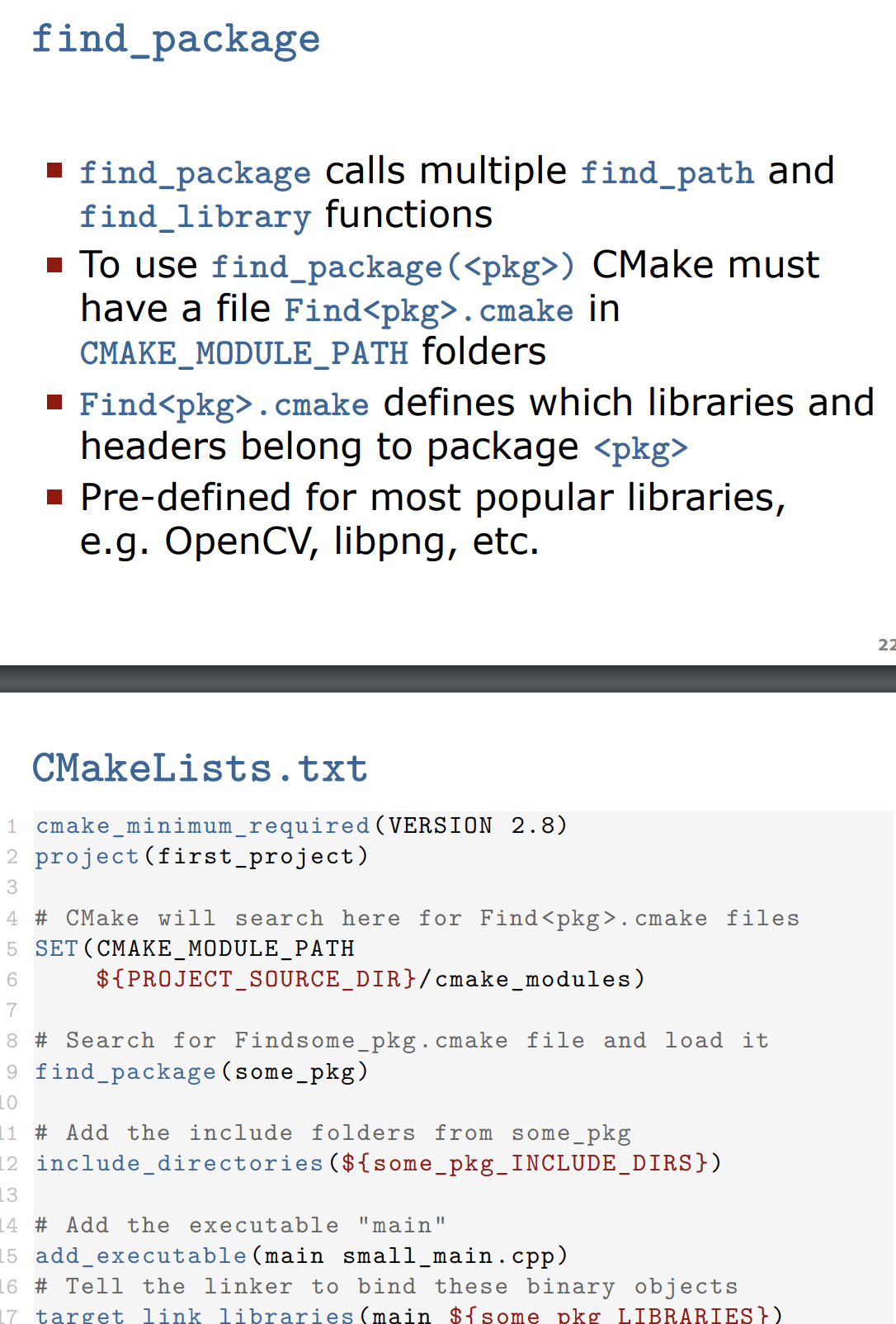Modern C++ Course [Lecture 5] {Move Semantics, Classes}

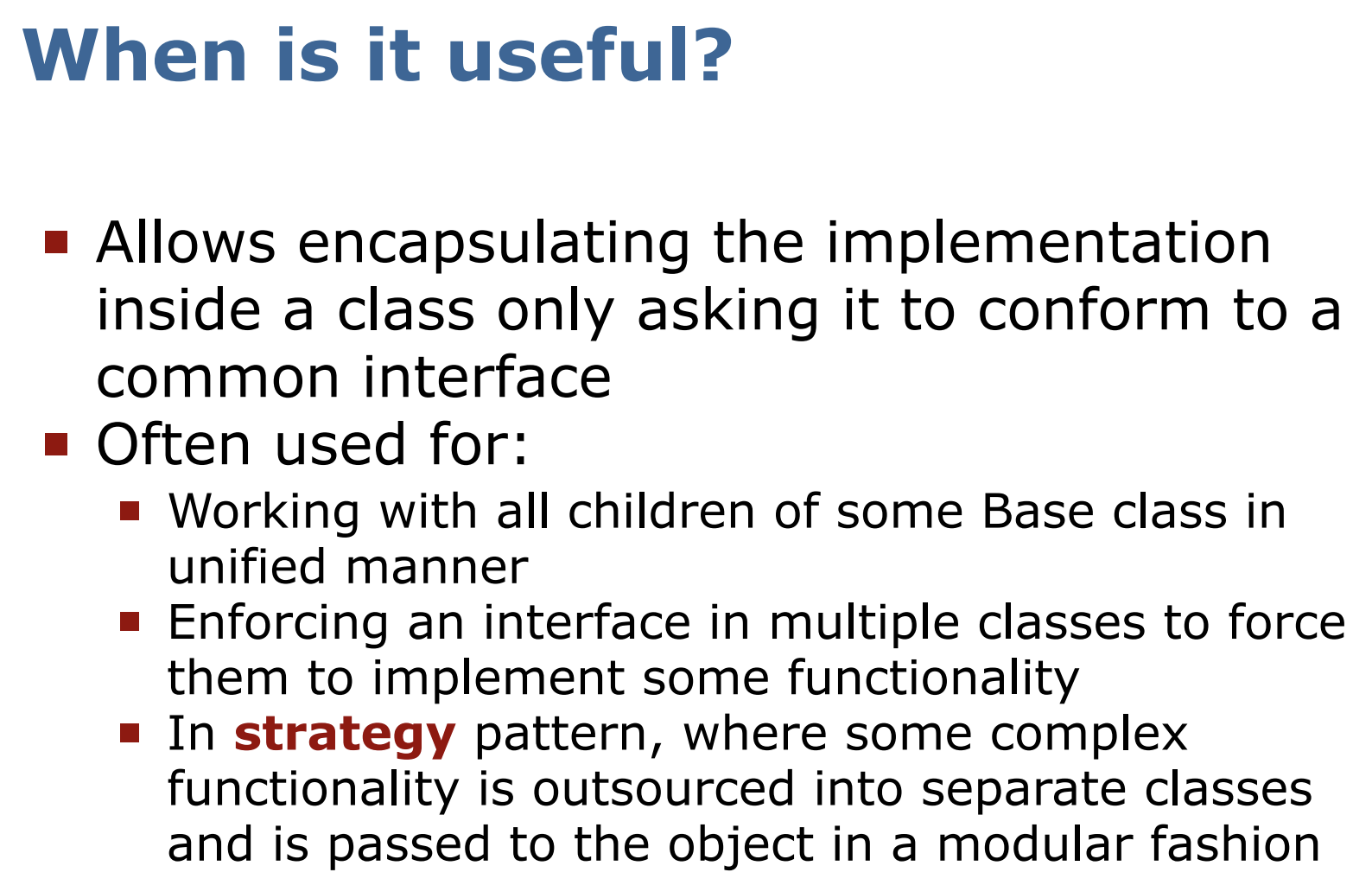
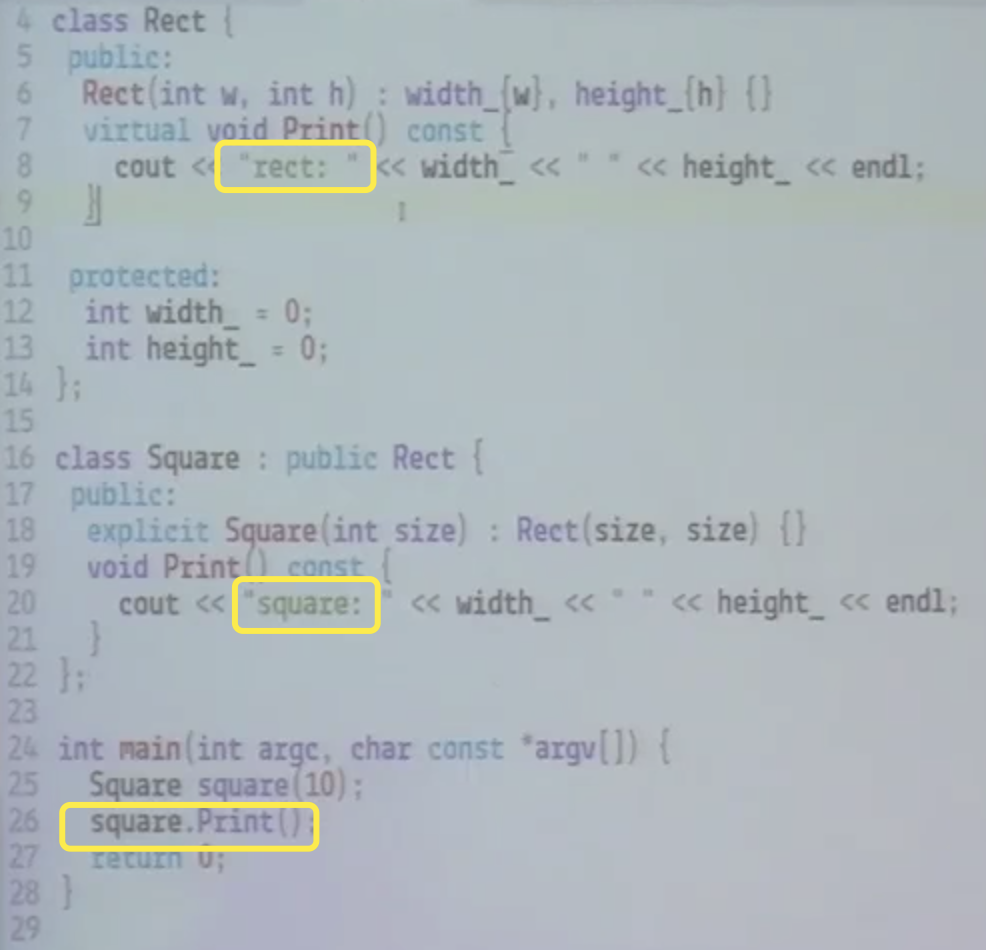
here, we're just creating a class Square inherited from class Rect.

compiler calls only Square.Print()
now we would really like to see what is polymorphism, so we create a reference here.
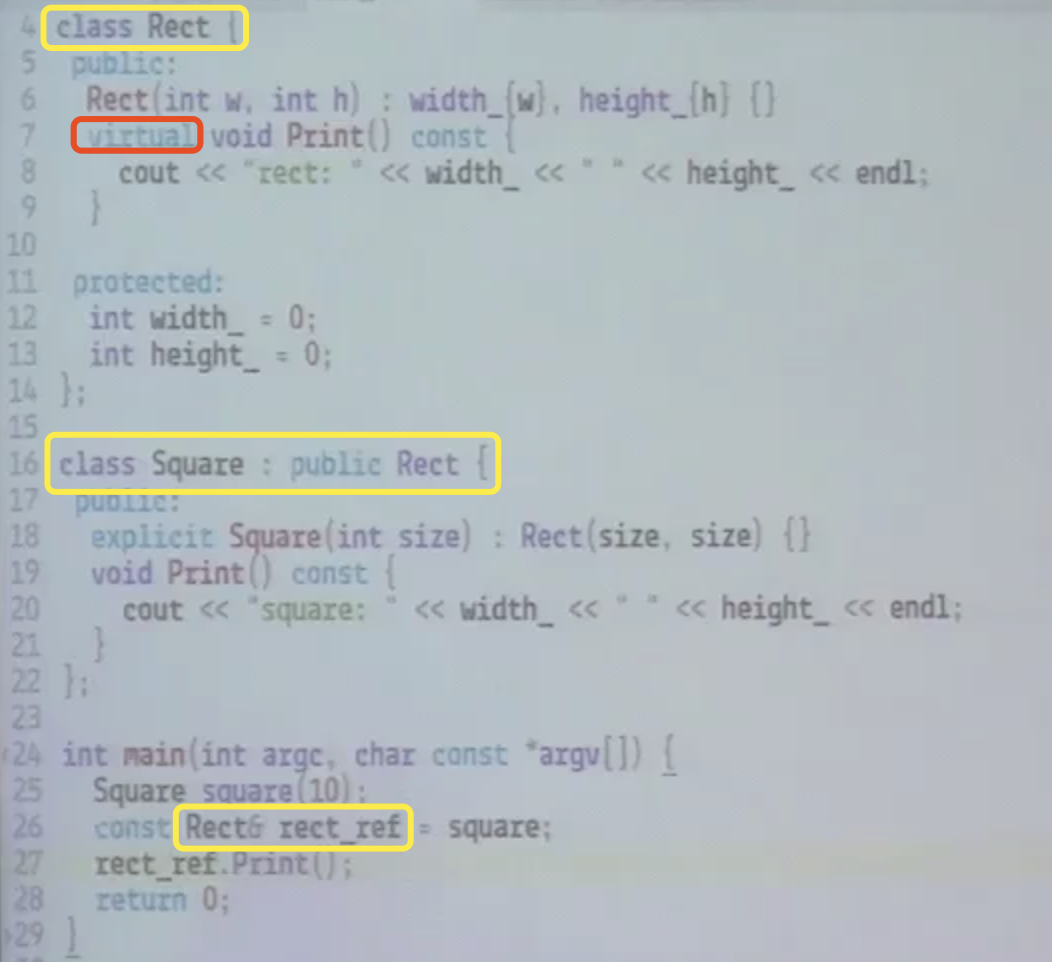
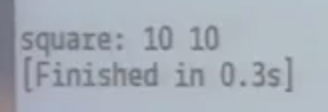
Result is still "square" here.
let's remove the virtual


First we defined a Square object "square", and square.Print() called Square's Print().
Then we defined a reference Rect object of square, then compiler would regard rect_ref as a Rect object, and call Rect.Print().
if we change a way to represent the Print() in using another function outside the class definition, in which way we don't need to write print function for every object.
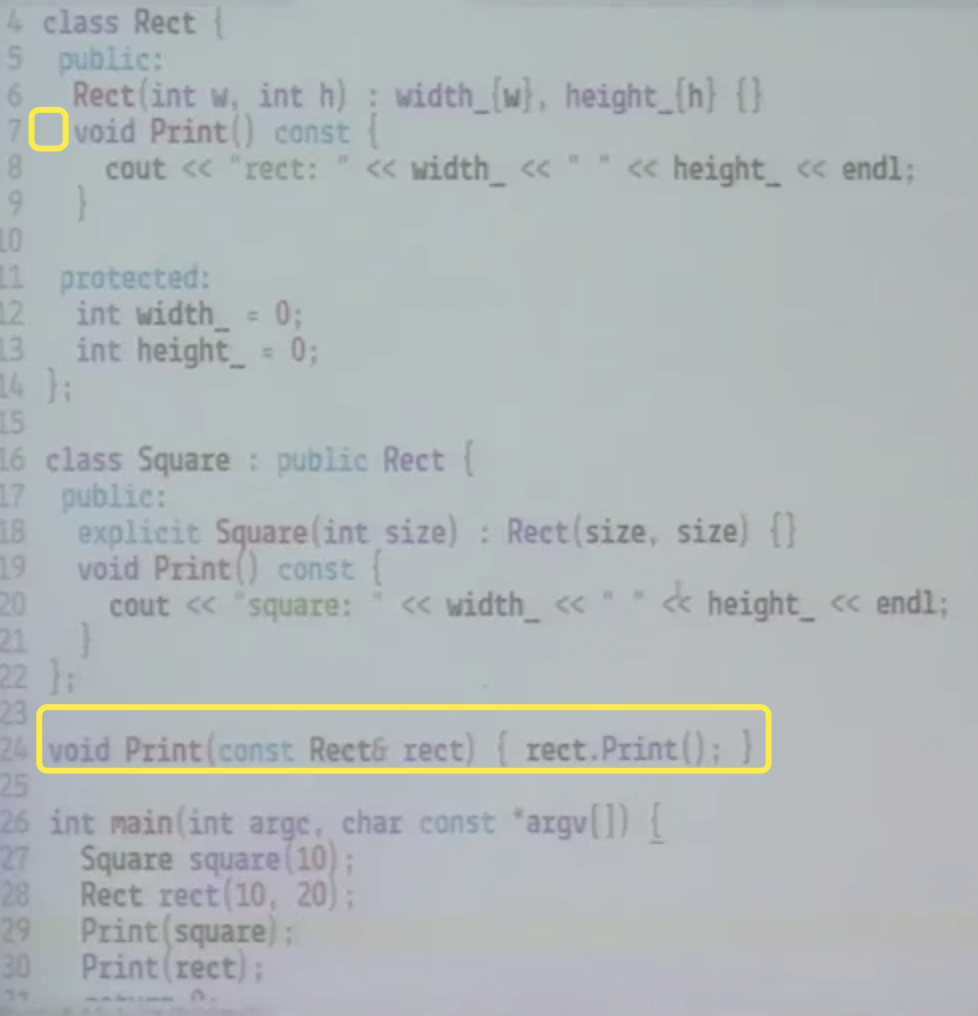
will receive errors here.
but adding "virtual" and "override" can magically avoid the problem.
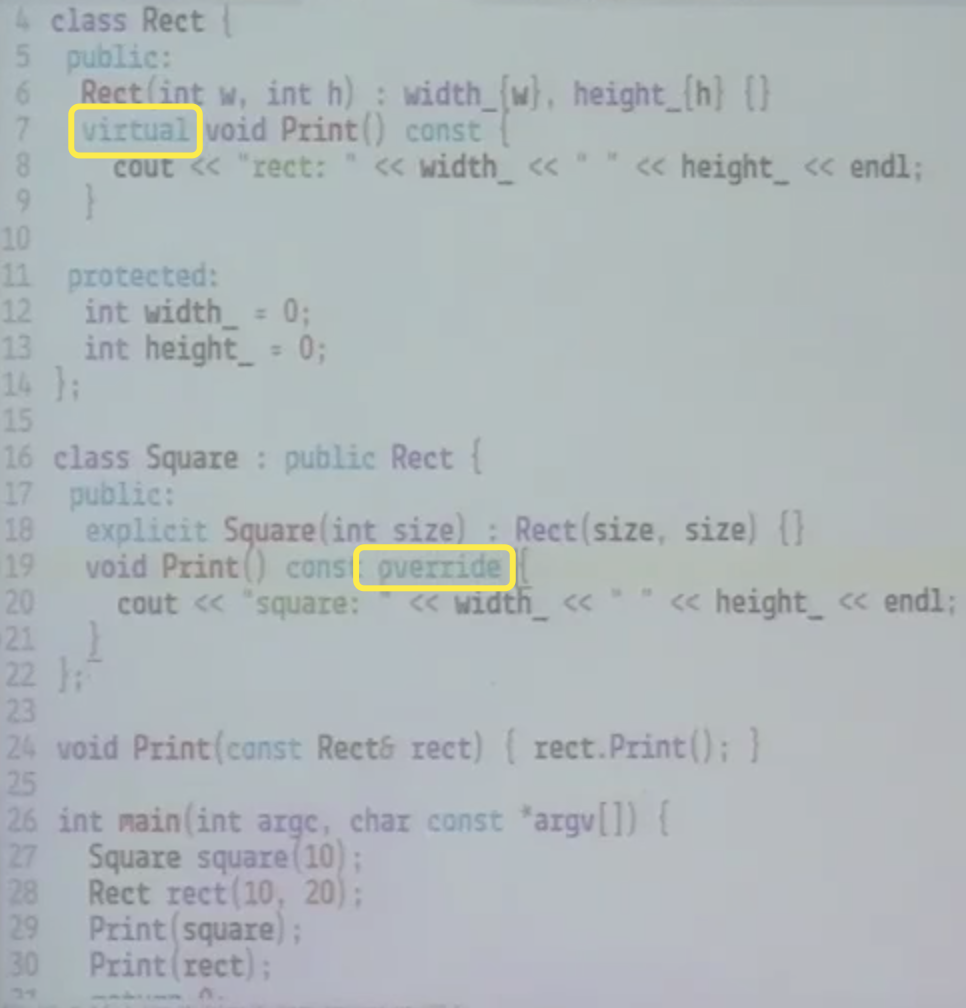

if we dont add virtual here, the output will always be:
rect 10 10
rect 10 20
rather than:
square 10 10
square 10 20
I think the idea behind virtual is that designers of C++ didn't want to waste time writing functions for classes inherited from this parental class. A reference would be efficient.
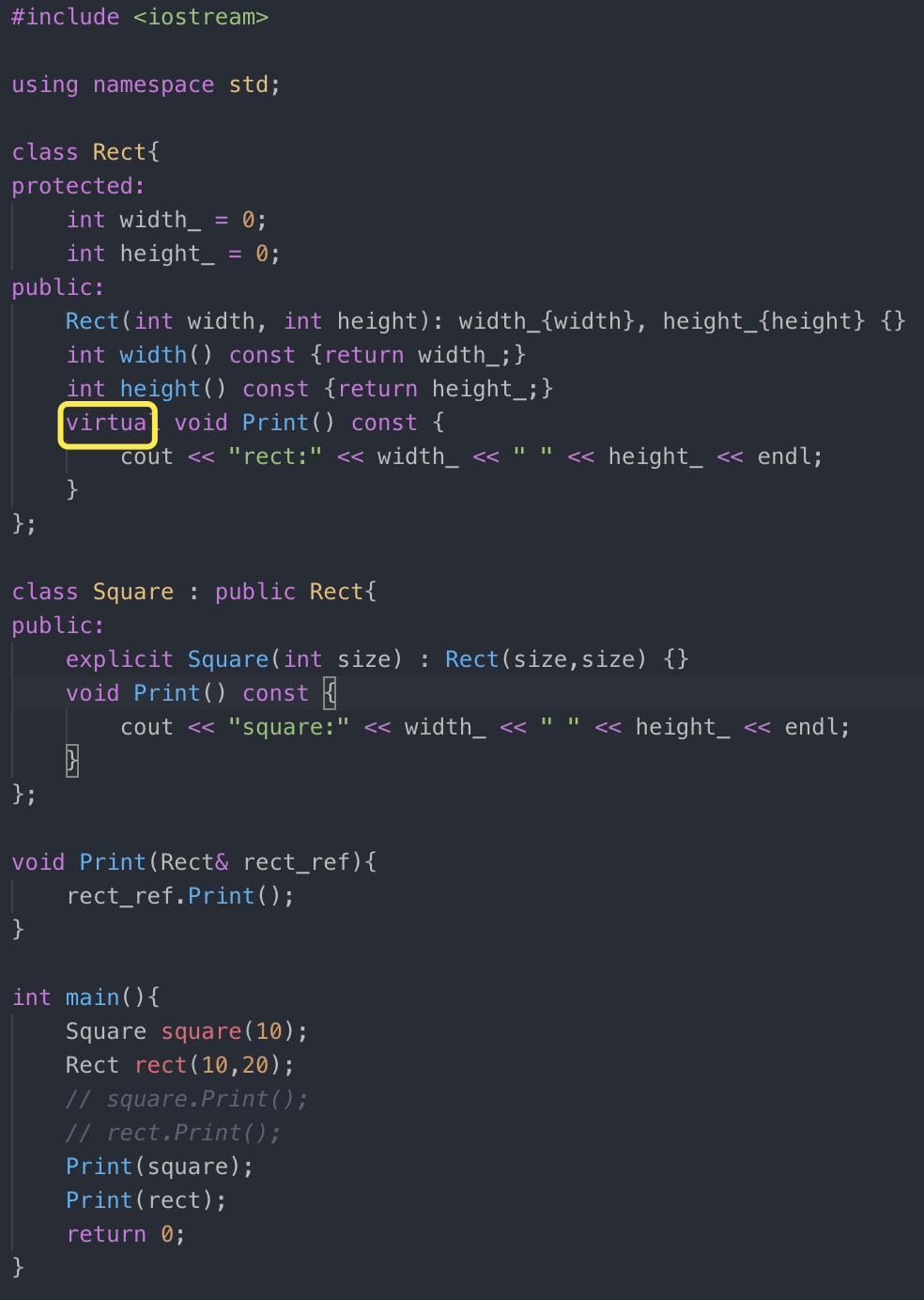
delete the "const" will have error, because it's overload rather than override

polymorphism only works for reference. dont remove the & !
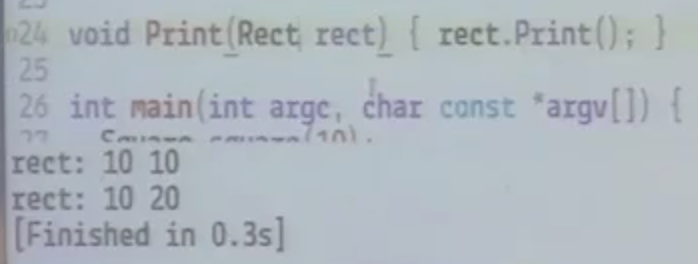
Let's summarize the two important points for polymorphism:
1, virtual function in parental class
2, use reference to represent objects in the interface definition

pure virtual func:


struct is just class with only public
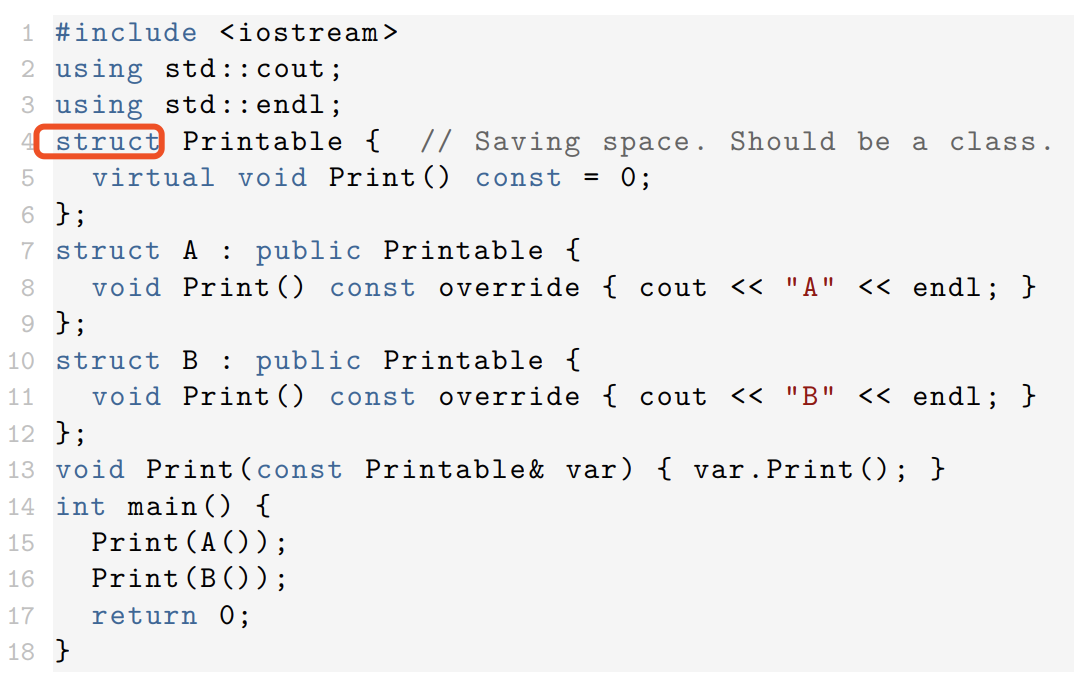
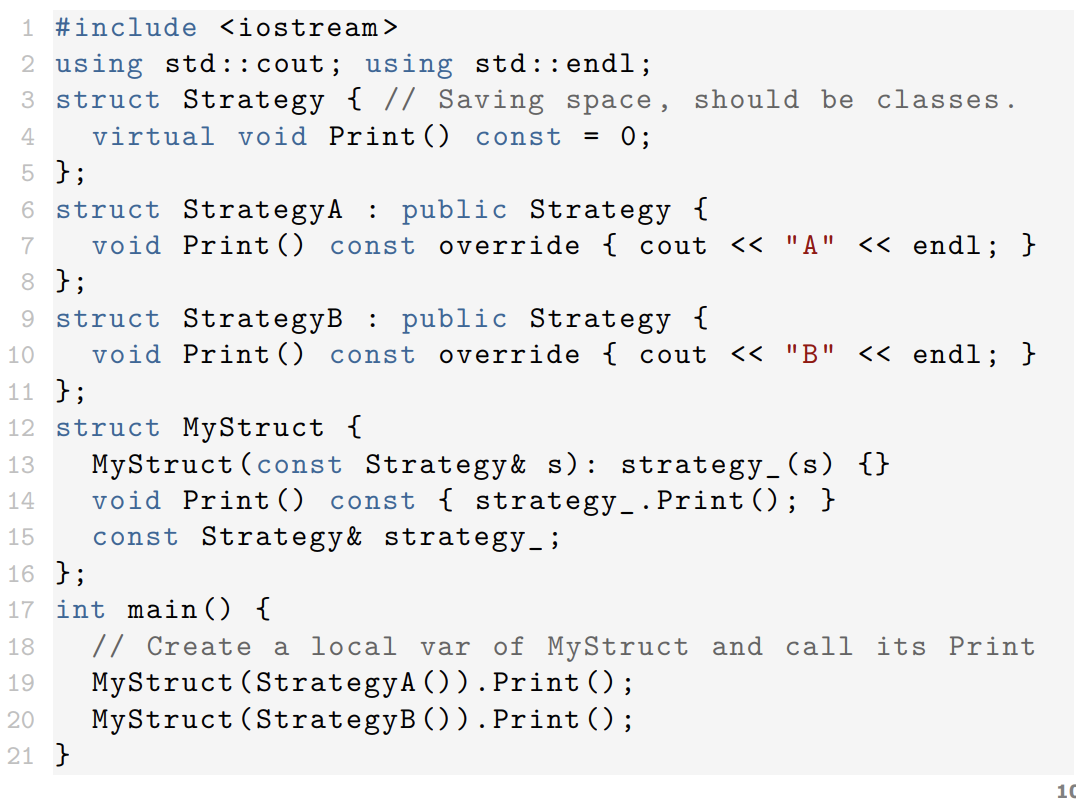

just F.Y.I.
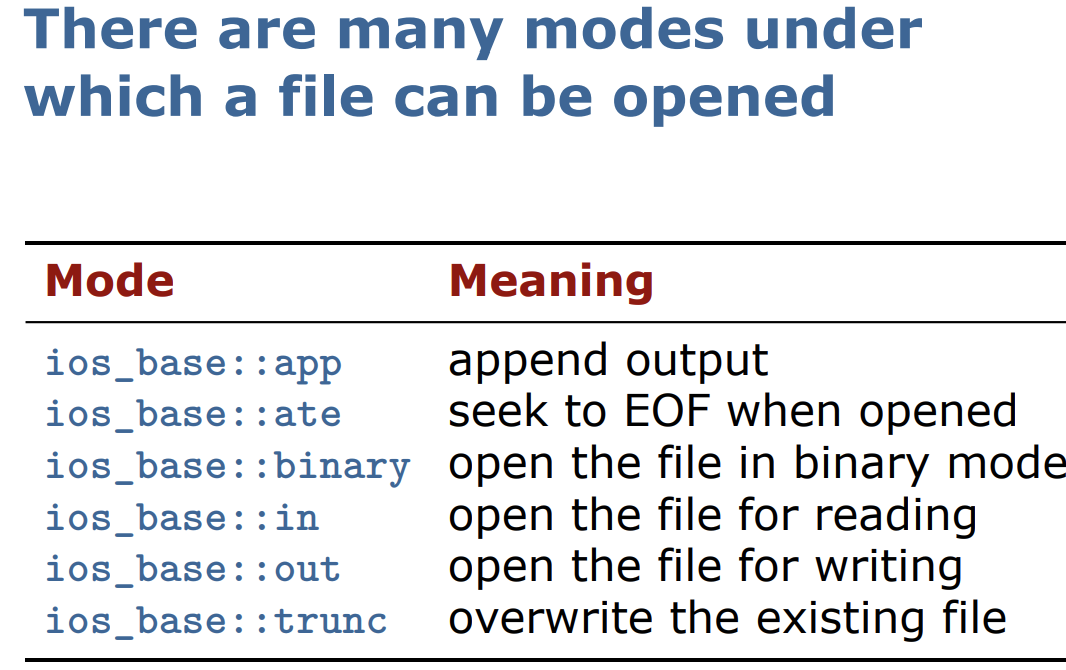
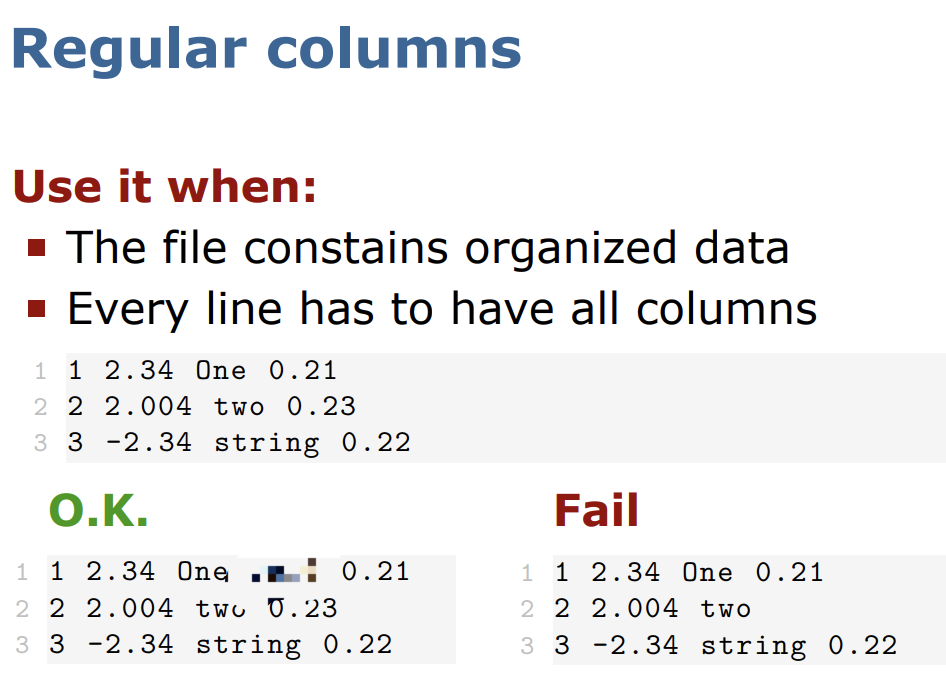
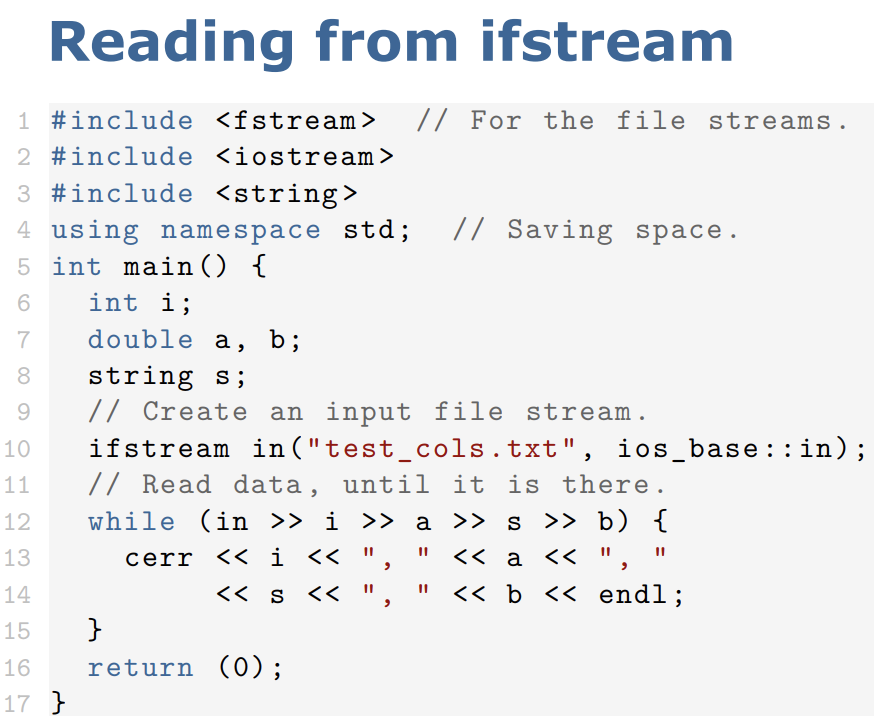
in operation will ignore the white place

input is an object of ifstream
getline is actually std::getline

output: define ofstream object "out", and out <<
input: define ifstream object "in", and in >>


